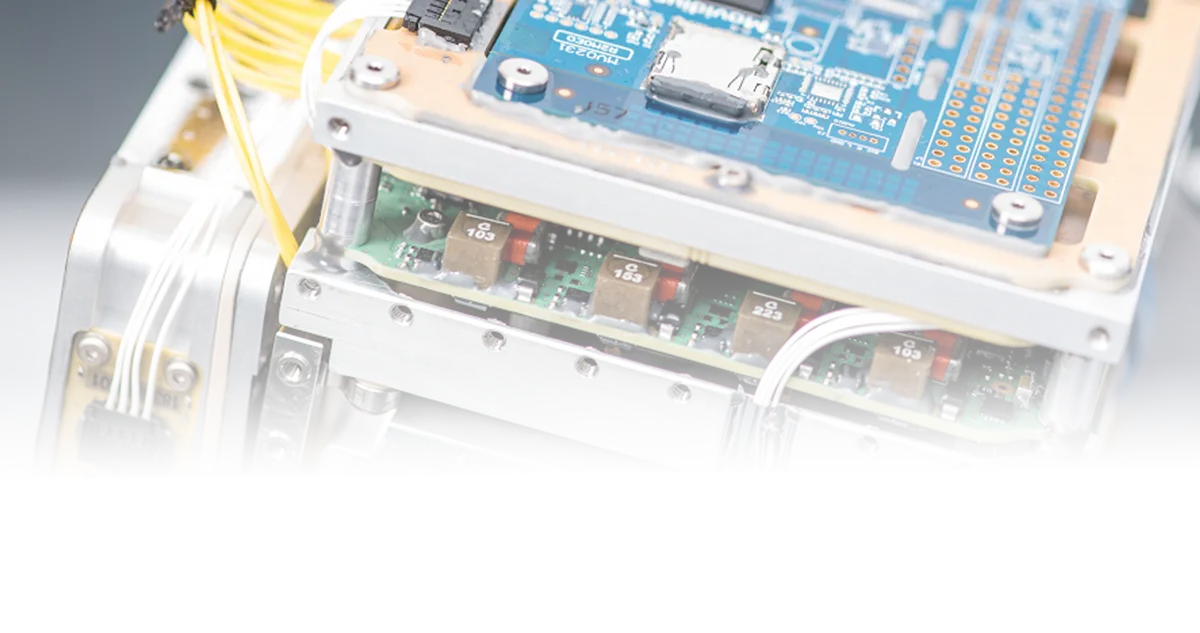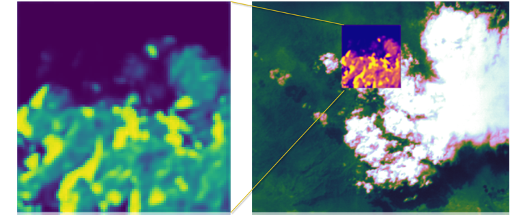
ESA Φ-sat programme, run by the EOP Φ Department, aims at developing a series of transformative AI based technologies that will be tested in flight by nano and mini satellites. We have contributed to the birth of the Φ-sat programme, worked on the AI elements of Φ-sat-1 and now we support the development of Φ-sat-2.
ɸ-sat-1, an enhancement of the Federated Satellite Systems mission, was launched onboard a Vega rocket from Europe’s spaceport in Kourou, French Guiana, on 3 September. ɸ-sat-1, pronounced PhiSat-1, will demonstrate how satellite data, coupled with advanced onboard digital technologies, can bring benefits to business, industry and science.
ɸ-sat-1 is the first experiment to demonstrate on-board feature detection using hyperspectral Earth observation Convolutional Neural Networks. The first example of this technology is on-board computing of cloud masks in order to remove cloud image regions before downloading. ɸ-sat-1 has successfully delivered its first image and cloud mask.
Following the successful launch of ɸ-sat-1 plans are already underway for the next innovative state-of-the-art technology, ɸ-sat-2. The next step, the ɸ-sat-2 mission, will further demonstrate the capabilities of artificial intelligence technology for Earth observation. The use of these technologies will lead to new ways of collecting, distributing and analysing data about our planet.
Φ-sat-2 will embark a SW platform able to runs AI apps to fully decouple the App features from the underlying on-board HW and by providing an integration Application Programming Interface (API) and tutorials to simplify the Apps development and integration. This will allow for the distribution and development of specialised AI Apps to different partners addressing a wide range of AI applications including to upload in flight, replace and run multiple AI algorithms of different natures and for different applications.

The ɸ-sat-2 mission involves an Earth observation 6U CubeSat platform capable of running AI apps that can be developed, easily installed, validated and operated on the spacecraft during their flight using a simple user interface.
The mission will address a wide range of AI applications including: transforming a satellite image to a street map, cloud detection in order to reduce the volume of data to be downlinked to the ground, autonomous detection and classification of maritime vessels, as well as forest monitoring and anomaly detection.
The spacecraft will fly in a sun-synchronous orbit with a powerful multi-spectral optical camera with an expected 4.75m ground resolution. The payload will include the AI processor Intel Movidius Myriad 2, which was already adopted on the Φ-sat-1 mission.
Contract negotiations are set to start soon, and if successful, the innovative ɸ-sat-2 satellite will be ready to launch just 16 months later.

Share